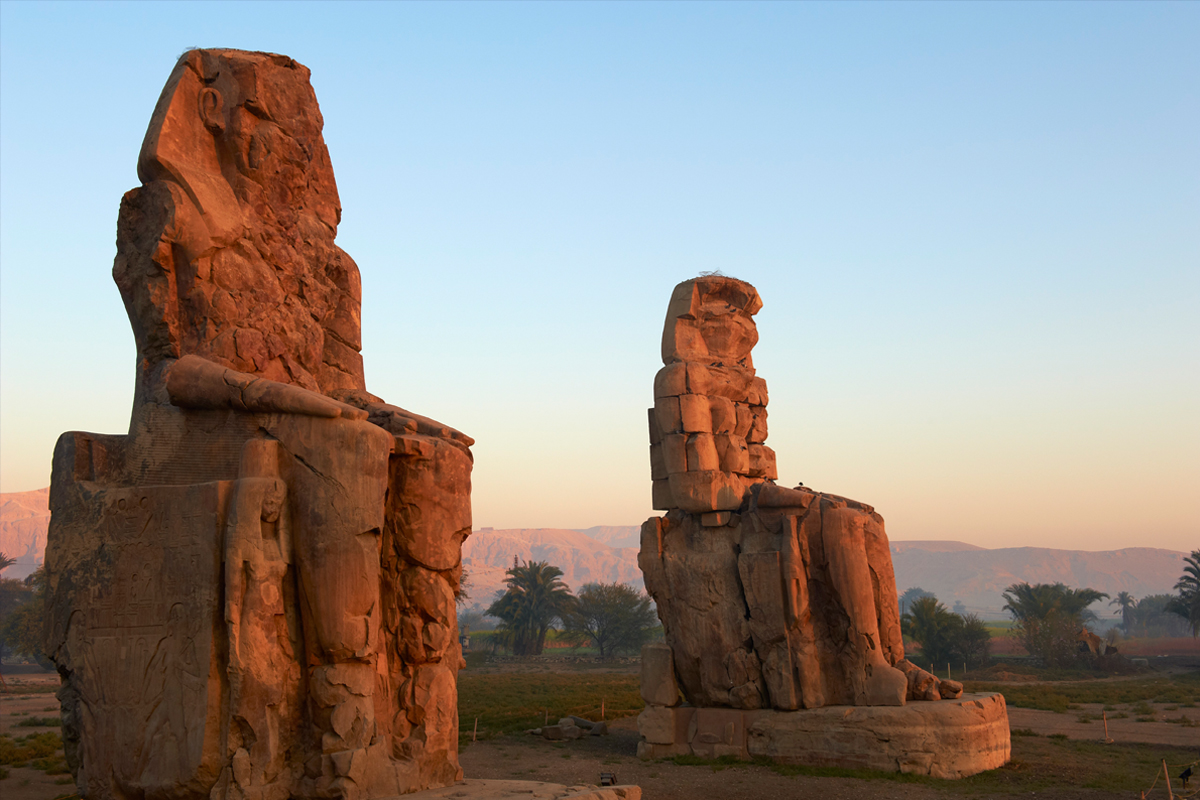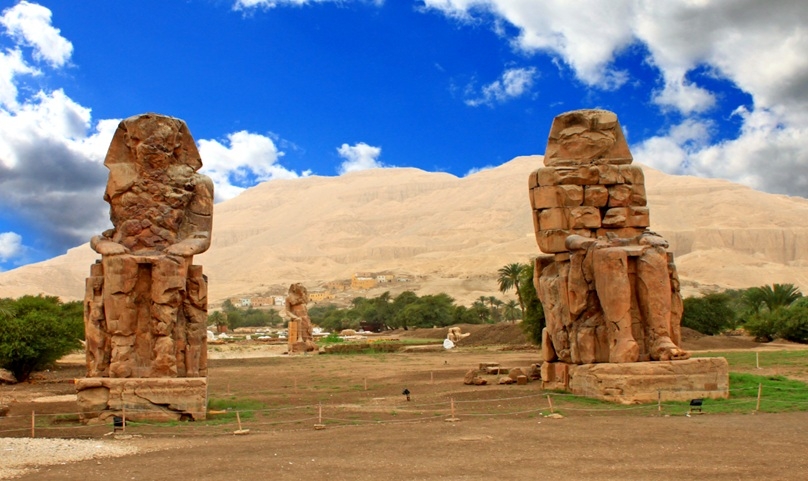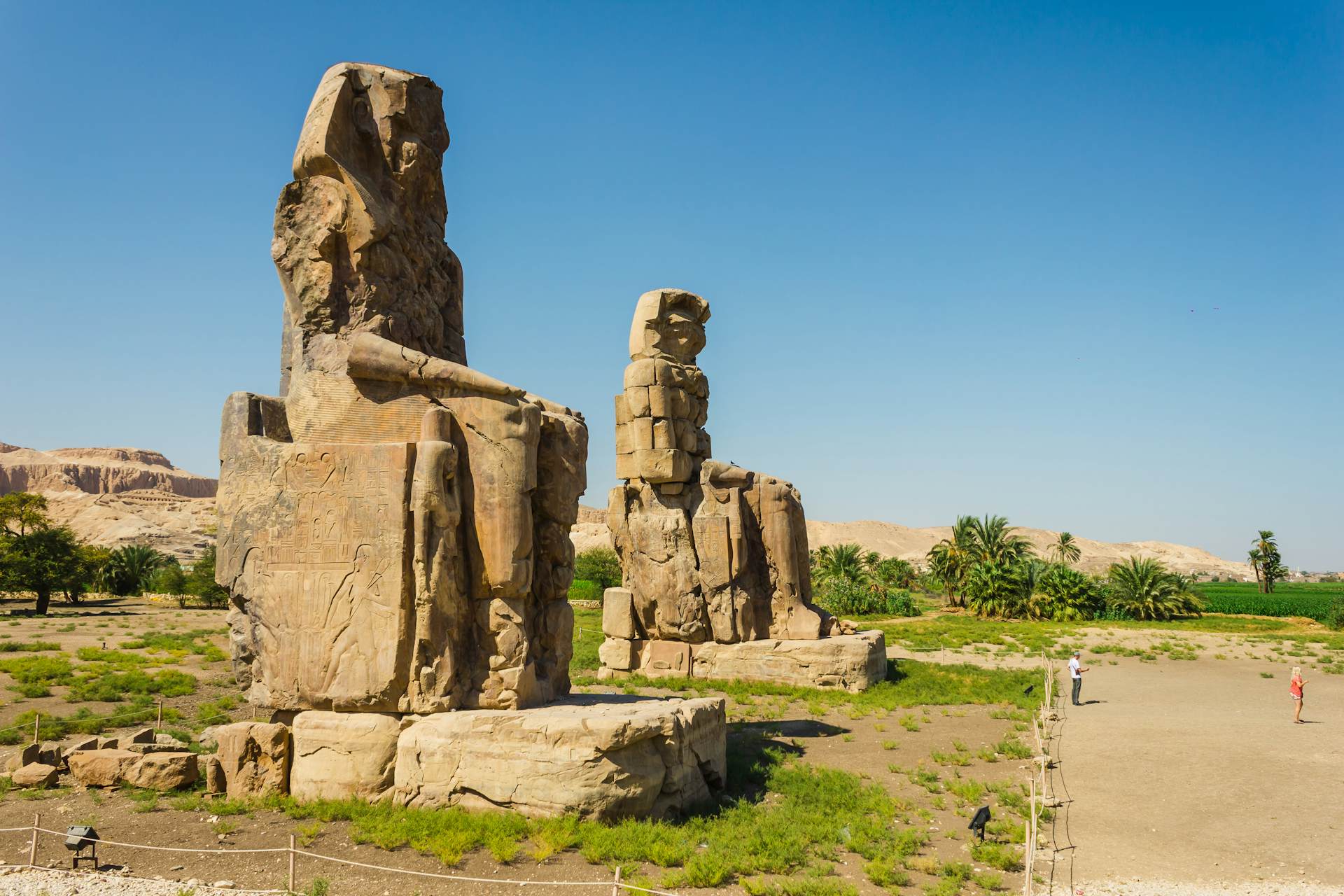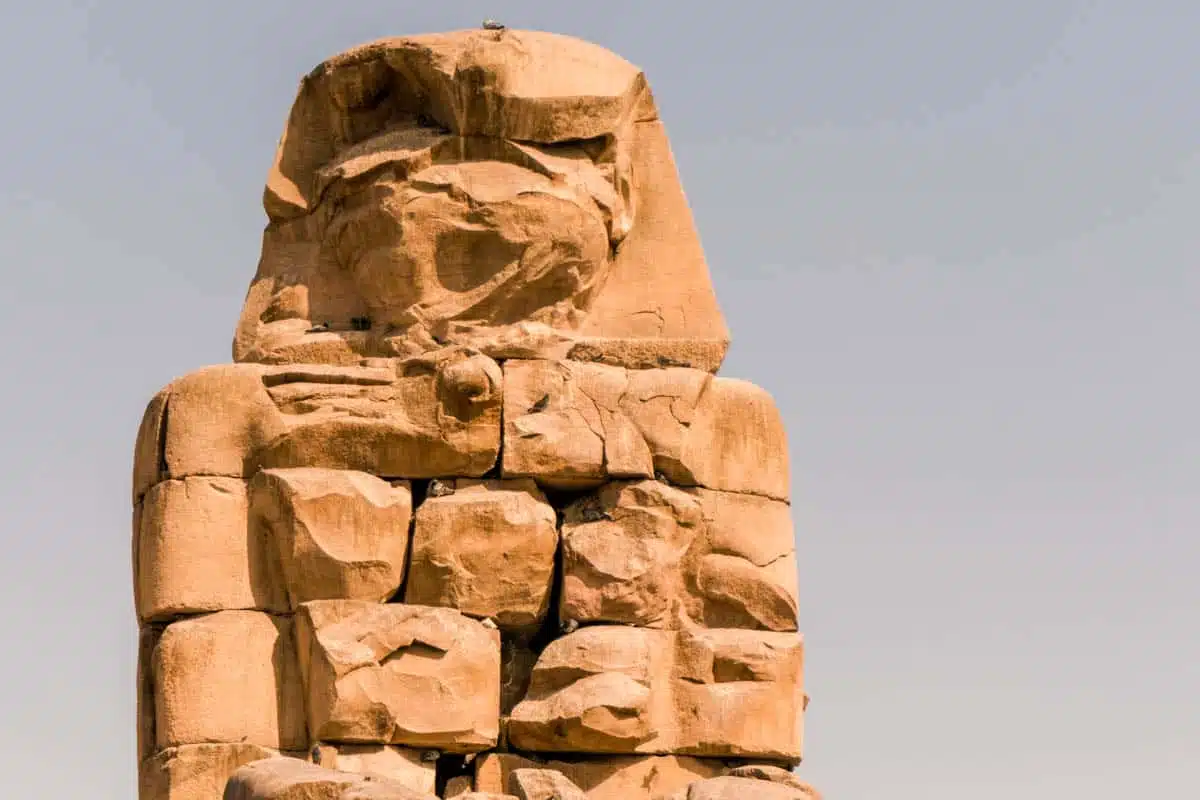The Colossi of Memnon, towering statues in Luxor, Egypt, stand as enduring symbols of Pharaoh Amenhotep III’s monumental legacy. Constructed around 1350 BCE, these 18-meter statues, carved from single blocks of quartzite sandstone, once flanked the entrance to his grand mortuary temple. Despite the temple’s collapse over time, the Colossi continue to captivate visitors with their imposing presence and intriguing history.
Monumental Construction and Artistic Significance
The Colossi were crafted from quartzite sandstone sourced over 675 kilometers away from Cairo, showcasing the ancient Egyptians’ engineering prowess. Each statue depicts Amenhotep III seated on a throne, with intricate carvings symbolizing the unity of Upper and Lower Egypt and honoring key figures like Queen Tiye and Mutemwiya. These statues were not mere decorations but powerful symbols of the pharaoh’s divine rule and cosmic harmony.

The Lost Mortuary Temple
Once part of the largest temple complex in ancient Egypt, the mortuary temple of Amenhotep III was a vast symbol of his divine authority. However, the temple was devastated by an earthquake in 27 BCE, leaving only the Colossi to represent its former grandeur.

The Singing Colossus: Myth and Mystery
In antiquity, the northern statue became famous as the “Singing Colossus” due to mysterious melodic sounds heard at dawn, believed to be a greeting from the Trojan War hero Memnon to his mother, Eos. Though the phenomenon ceased after Roman repairs in 199 CE, the legend persists, adding a mystical layer to the statues’ allure.

Enduring Legacy and Preservation
Today, ongoing excavations and conservation efforts continue to reveal more about the temple’s scope and preserve the Colossi for future generations. These statues remain a powerful testament to ancient Egypt’s architectural, artistic, and cultural achievements.

Conclusion
The Colossi of Memnon are timeless guardians of Pharaoh Amenhotep III’s reign, reflecting the brilliance of ancient Egyptian civilization. Their construction, symbolism, and place in legend encapsulate the grandeur of a lost era and invite reflection on the enduring human legacy of this ancient culture.
